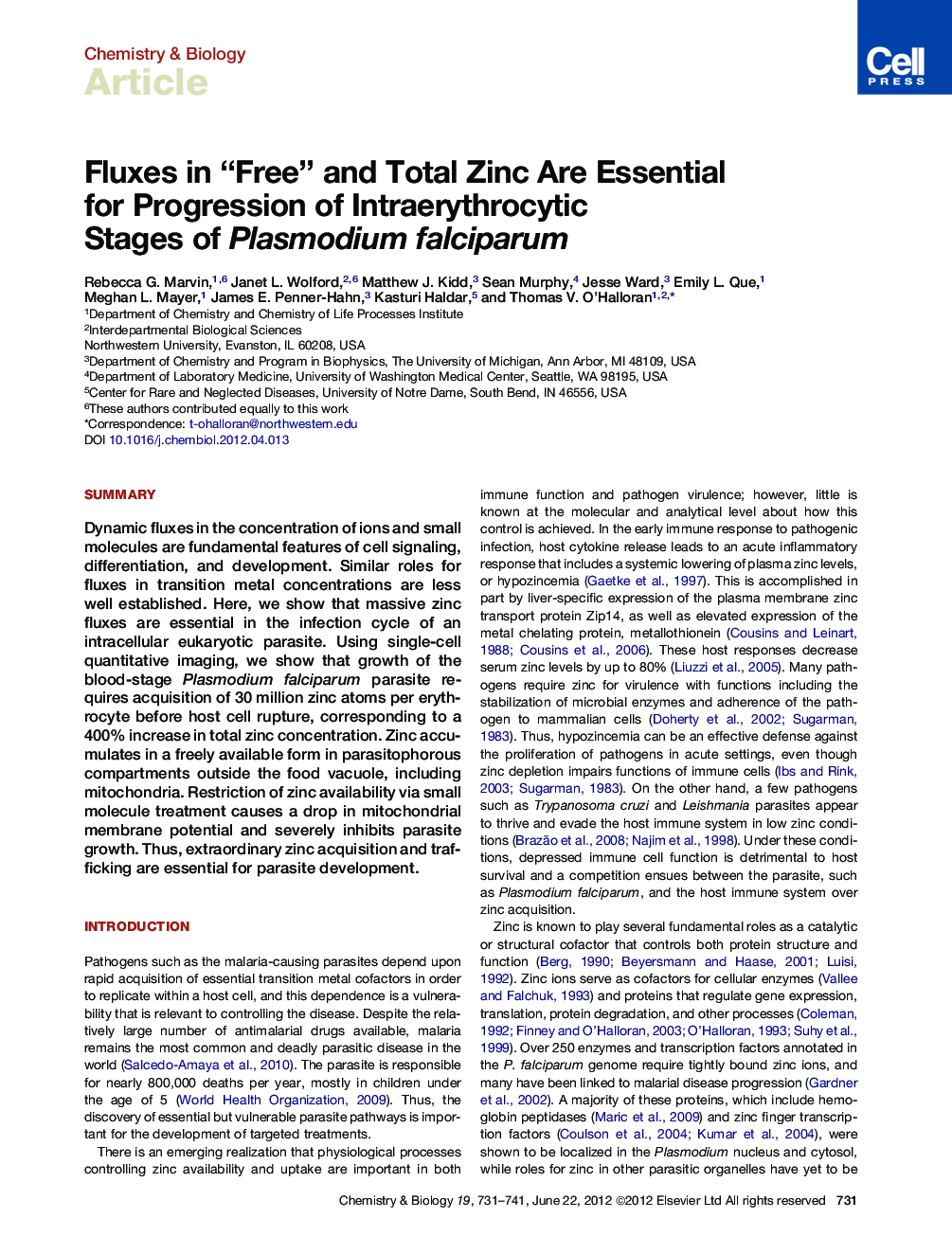| Article ID | Journal | Published Year | Pages | File Type |
|---|---|---|---|---|
| 1391293 | Chemistry & Biology | 2012 | 11 Pages |
SummaryDynamic fluxes in the concentration of ions and small molecules are fundamental features of cell signaling, differentiation, and development. Similar roles for fluxes in transition metal concentrations are less well established. Here, we show that massive zinc fluxes are essential in the infection cycle of an intracellular eukaryotic parasite. Using single-cell quantitative imaging, we show that growth of the blood-stage Plasmodium falciparum parasite requires acquisition of 30 million zinc atoms per erythrocyte before host cell rupture, corresponding to a 400% increase in total zinc concentration. Zinc accumulates in a freely available form in parasitophorous compartments outside the food vacuole, including mitochondria. Restriction of zinc availability via small molecule treatment causes a drop in mitochondrial membrane potential and severely inhibits parasite growth. Thus, extraordinary zinc acquisition and trafficking are essential for parasite development.
Graphical AbstractFigure optionsDownload full-size imageDownload high-quality image (162 K)Download as PowerPoint slideHighlights► A 400% increase in zinc concentration is essential for Plasmodium development ► Metallome analysis at single-cell level reveals uptake of 30 million zinc atoms ► Free zinc builds up within parasite compartments and mitochondria with stage ► Extraordinary zinc acquisition is likely an adaptation to acute limitation by host
